

A shaman is a medicine man or woman.


A shaman is a medicine man or woman.
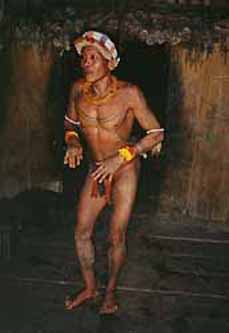
Shaman are spiritual beings with the ability to heal, work with energies and 'see' visions. The essential characteristics of shaman are mastery of energy and fire as a medium of transformation.
Shamanism is a range of traditional beliefs and practices that involve the ability to diagnose, cure, and sometimes cause human suffering by traversing the axis mundi and forming a special relationship with, or gaining control over, spirits. Shamans have been credited with the ability to control the weather, divination, the interpretation of dreams, astral projection, and traveling to upper and lower worlds. Shamanistic traditions have existed throughout the world since prehistoric times.
Shamanism is based on the premise that the visible world is pervaded by invisible forces or spirits that affect the lives of the living. In contrast to animism and animatism, which any and usually all members of a society practice, shamanism requires specialized knowledge or abilities. Shamans are not, however, organized into full-time ritual or spiritual associations, as are priests.
The word shaman originated among the Siberian Tungus (Evenks) and literally means he (or she) who knows; the belief that the word may be derived from Sanskrit is perhaps due to a confusion of the words 'shamanism' and 'shramanism', from the sanskrit shramana, Pali and Prakrit samana; but the samanas were ascetics, not shamans.
It has replaced the older English language term witch doctor, a term which unites the two stereotypical functions of the shaman: knowledge of magical and other lore, and the ability to cure a person and mend a situation. However, at the present time this term is generally considered to be pejorative and anthropologically inaccurate. Medicine man is preferred, especially as not all traditional peoples approve of the use of shaman as a generic term, given that the word comes from a specific place and people.
Shamanistic practices are thought to predate all organized religions, and certainly date back to the neolithic period. Aspects of shamanism are encountered in later, organized religions, generally in their mystic and symbolic practices. Greek paganism was influenced by shamanism, as reflected in the stories of Tantalus, Prometheus, Medea, Calypso among others, as well as in the Eleusinian Mysteries, and other mysteries. Some of the shamanic practices of the Greek religion were later adopted into the Roman religion.
There is a strong shamanistic influence in the Bšn religion of central Asia, and in Tibetan Buddhism. Buddhism became popular with shamanic peoples such as the Tibetans, Mongols and Manchu beginning with the eighth century. Forms of shamanistic ritual combined with Tibetan Buddhism became institutionalized as the state religion under the Chinese Yuan dynasty and Qing dynasty. One common element of shamanism and Buddhism is the attainment of spiritual realization, at times mediated by entheogenic (psychedelic) substances.
The shamanic practices of many cultures were virtually wiped out with the spread of Christianity. In Europe, starting around 400 CE, the Christian church was instrumental in the collapse of the Greek and Roman religions. Temples were systematically destroyed and key ceremonies were outlawed. Beginning with the middle ages and continuing into the Renaissance, remnants of European shamanism were wiped out by campaigns against witches. These campaigns were often orchestrated by the Catholic Inquisition.
The repression of shamanism continued as Christian influence spread with Spanish colonization. In the Caribbean, and Central and South America, Catholic priests followed in the footsteps of the Conquistadors and were instrumental in the destruction of the local traditions, denouncing practitioners as "devil worshippers" and having them executed. In North America, the English Puritans conducted periodic campaigns against individuals perceived as witches. More recently, attacks on shamanic practitioners have been carried out at the hands of Christian missionaries to third world countries. As recently as the nineteen seventies, historic petroglyphs were being defaced by missionaries in the Amazon.
It has been postulated that modern state campaigns against the use of psychedelic substances are the offshoot of previous religious campaigns against shamanism.Today, shamanism, once universal, survives primarily among indigenous peoples. Shamanic practice continues today in the tundras, jungles, deserts, and other rural areas, and also in cities, towns, suburbs and shantytowns all over the world. This is especially widespread in Africa as well as South America, where "mestizo shamanism" is widespread.
Many recent efforts have been made trying to link shamanic practice and knowledge with Western, scientific beliefs. Anthropologist Jeremy Narby has proposed that shamans take their consciousness down to the molecular level, working with DNA and viruses that they see as the twin serpents or malicious "darts". The holomovement theory proposed by David Bohm is often seen as an approach to create a scientific foundation for concepts such as parallel worlds and alternative ways to traverse time and space.
Different forms of shamanism are found around the world, and practitioners are also known as medicine men or women, as well as witch doctors.
In Shamanic cultures, the shaman plays a priest like role; however, there is an essential difference between the two, as Joseph Campbell describes:
A shaman may be initiated via a serious illness, by being struck by lightning, or by a near-death experience (e.g. the shaman Black Elk), and there usually is a set of cultural imagery expected to be experienced during shamanic initiation regardless of method.
According to Mircea Eliade, such imagery often includes being transported to the spirit world and interacting with beings inhabiting it, meeting a spiritual guide, being devoured by some being and emerging transformed, and/or being "dismantled" and "reassembled" again, often with implanted amulets such as magical crystals. The imagery of initiation generally speaks of transformation and granting powers, and often entails themes of death and rebirth.
In some societies shamanic powers are considered to be inherited whereas in others shamans are considered to have been "called" - Among the Siberian Chukchis one may behave in ways that Western clinicians would characterize as psychotic, but which Siberian culture interprets as possession by a spirit who demands that one assume the shamanic vocation. Among the South American Tapirape shamans are called in their dreams. In other societies shamans choose their career: First Nations would seek communion with spirits through a "vision quest"; South American Shuar, seeking the power to defend their family against enemies, apprentice themselves to accomplished shamans.
The shaman plays the role of healer in shamanic societies; shamans gain knowledge and power by traversing the axis mundi and bringing back knowledge from the heavens. Even in western society, this ancient practice of healing is referenced by the use of the caduceus as the symbol of medicine.
Oftentimes the shaman has, or acquires, one or more familiar helping entities in the spirit world; these are often spirits in animal form, spirits of healing plants, or (sometimes) those of departed shamans. In many shamanic societies, magic, magical force, and knowledge are all denoted by one word, such as the Quechua term yachay.
While the causes of disease are considered to lie in the realm of the spiritual, being effected by malicious spirits or Witchcraft, spiritual methods as well as what we would consider physical methods are used to heal. The shaman often will enter the body of their patient to find the spirit making the patient sick, and heal by removing the infectious spirit by the patient.
However, many shamans have expert knowledge of the plant life in their area, and an herbal regimine is often perscribed as treatment. In many places, the shamans claim to learn from the plants directly, only being able to determine the effects of a plant and use it to heal after meeting the spirit of the plant and getting permission.
In South America, individual spirits are called through singing icaros; to call the spirit, the spirit must teach you their song.
The use of totem items such as rocks is common; these items are believed to have special powers and an animating spirit.
Such practices are presumably very ancient; in circa 368 bc, Plato wrote in the Phaedrus that the "first prophecies were the words of an oak", and that everyone who lived at that time found it rewarding enough to "listen to an oak or a stone, so long as it was telling the truth".
The belief in witchcraft and sorcery, known as brujeria in South America, is prevalent in many shamanic societies.
Some societies distinguish shamans who cure from sorcerers who harm; others believe that all shamans have the power to both cure and kill; that is, shamans are in some societies also thought of as being capable of harm. The shaman usually enjoys great power and prestige in the community, renowned for their powers and knowledge; but they may also be suspected of harming others and thus feared.
In engaging in this work the shaman exposes himself to significant personal risk, from the spirit world, from any enemy shamans, as well as from the means employed to alter his state of consciousness. Certain of the plant materials used can kill, and the out-of-body journey itself can lead to non-returning and physical death; spells of protection are common, and the use of more dangerous plants is usually very highly ritualized.
Shamanic technologyGenerally, the shaman traverses the axis mundi and enters the spirit world by effecting a change of consciousness in himself, entering into an ecstatic trance, either autohypnotically or through the use of entheogens. The methods used are diverse, and often are used in conjunction with each other.
Some of the methods for effecting such altered states of consciousness are:
Power Plants
Shamans often observe special diets or fasts and taboos particular to their vocation. Sometimes these have physical purposes beyond effecting a change in brain state or taboo; for example, the diet followed by shamans and apprentices when drinking Ayahuasca includes eating foods rich in serotonin as well as avoiding foods rich in tyramine, which could cause a hypertensive crisis if ingested with an MAOI such as Ayahuasca.
Most shamans are men, but there are societies in which women may be shamans. In Old Norse Religion, shamanism was seen as un-manly and practiced mainly by women. However, in Old Norse mythology, the supreme god Odin was also seen as the foremost shaman. In some societies shamans exhibit a two-spirit identity, assuming the dress and attributes of the opposite sex from a young age, this may include a man taking on the role of a wife in an otherwise ordinary marriage; this practice is common, and found among the Chukchee, Sea Dyak, Patagonians, Aruacanians, Arapaho, Cheyenne, Navaho, Pawnee, Lakota, and Ute, as well as many other Native American tribes. Such two-spirit shamans are thought to be especially powerful. They are highly respected and sought out in their tribes, as they will bring high status to their mates.
The New Age movement imported some ideas from shamanism as well as Eastern religions. As in other such imports, the original users of these ideas frequently condemn New Age use as misunderstood and superficial.
At the same time, there is an endeavor in occult and esoteric circles to re-invent shamanism in a modern form drawing from core shamanism, a set of beliefs and practices synthesized by Michael Harner and often revolving around the use of ritual drumming and dance; various indigenous forms of shamanism, often focusing on the ritual use of entheogens, as well as chaos magic.
Much of this is focused upon in Europe, where ancient shamanic traditions was suppressed by the Christian church and where people compelled to be shamans often find it improper to use shamanic systems rooted in other parts of the earth. Various traditional shamans express respect for this endeavor and in this, separate it sharply from "light" New Age shamanism.
Sometimes people from Western cultures claim to be shamans. This is considered offensive by many indigenous medicine men, who view these new age, western "shamans" as hucksters out for money or affirmation of self. Many shamanistic cultures feel there is a danger that their voices will be drowned out by self-styled "shamans"; citing, for example, the fact that Lynn Andrews has sold more books than all Native American authors put together.
12,000-Year-Old Shaman's Elaborate Funeral Had 6 Stages Live Science - July 6, 2016
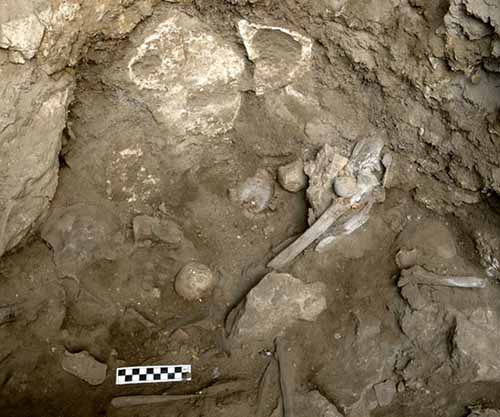
A diminutive woman buried in a cave in Israel 12,000 years ago was likely a person of importance and was interred with great ceremony, including a feast of 86 tortoises, archaeological evidence suggests. After years of analysis, experts have reconstructed the stages of a funeral ritual performed as the body was laid to rest, piecing together the chain of events with the help of unusual objects that were found at the burial site. The researchers described a six-step process that acknowledged the respected position that the woman held in life, and hints at the complexity of burial rituals practiced in the region thousands of years in the past.
Scientists Put Shamanic Medicine Under The Microscope Huffington Post - October 18, 2015
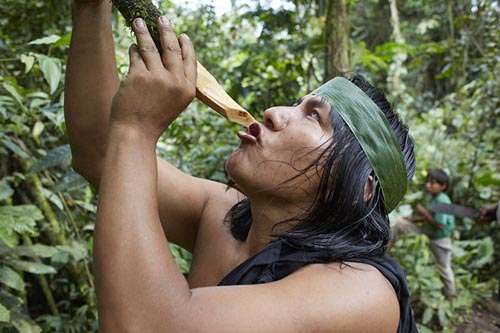
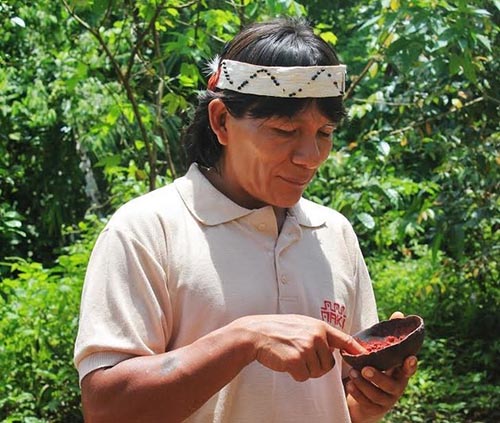
In an unlikely collaboration with Amazonian shamans, medical researchers seek a cure for autoimmune disease.
Shaman 'Rainmaking' Center Discovered in South Africa Live Science - May 31, 2013
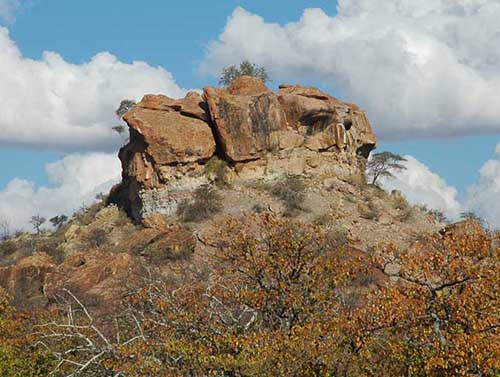
A towering "rain control" site, where shamans would have asked the gods to open up the skies centuries ago, has been discovered in South Africa. Located in a semiarid area of the country, near Botswana and Zimbabwe, the site of Ratho Kroonkop (RKK) sits atop a 1,000-foot-tall (300 meters) hill and contains two naturally formed "rock tanks." These tanks are depressions in the rock created when water weakens the underlying sandstone. When the scientists excavated one of them, they found over 30,000 animal specimens, including the remains of rhinoceros, zebra and even giraffe. "What makes RKK special is that every piece of faunal material found at RKK can in some way be linked to rain control," researcher Simone Brunton, a doctoral candidate at the University of Cape Town. The shamans, or religious leaders, would have ascended to the top of Ratho Kroonkop through natural tunnels (fissures) in the rock. When they reached the top of the hill, they would have lit a fire to burn the animal remains as part of their rainmaking rituals.
Mysterious Shaman Stones Uncovered in Panama Live Science - January 16, 2013
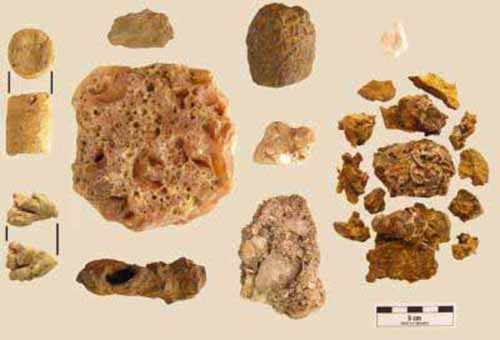
Archaeologists have unearthed nearly 5,000-year-old shaman's stones in a rock shelter in Panama. The stone collection may be the earliest evidence of shamanic rituals in that region of Central America, researchers say. The 12 stones were found in the Casita de Piedra rock shelter, in the Isthmus of Panama. The rocks, which carbon-dating of surrounding material showed to be between 4,000 and 4,800 years old, were clustered in a tight pile. That suggests they had been carried there, likely in a leather pouch that has long-since disintegrated. If correct, it constitutes the earliest material evidence in lower Central America of shamanistic practice.
Remains of Ancient Feast to Honor Dead Shaman Discovered Live Science - August 31, 2010
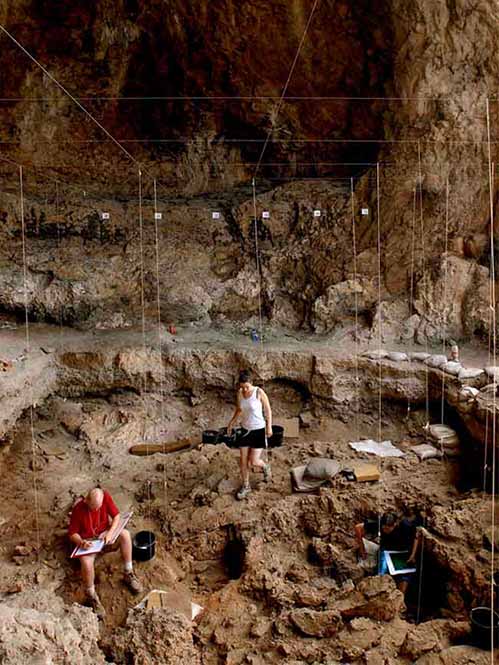
Prehistoric leftovers of a feast 12,000 years ago at an apparent shaman's gravesite have been unearthed in what is now Israel. Archaeologists say the ritual might be the first clear evidence of feasting in early humans, a sign of the kinds of increasingly complex societies that proved crucial to the dawn of agriculture.
In a cave above a creek in the Galilee region of northern Israel, scientists discovered the body of a petite, elderly, disabled woman, most probably a shaman, in 2005. As they continued to excavate, they found the woman apparently was intentionally laid to rest in a specially crafted hollow between the remains of at least 71 Mediterranean tortoises, as well as with seashells, beads, stone tools and bone tools. In a separate pit nearby, they also found bones of at least three wild, extinct cattle known as aurochs. The cattle bones showed clear signs of butchery, with the bones cracked for marrow, while there were enough tortoises to supply meat for at least 35 people. Signs of burning were seen on both the cattle and turtle remains, suggesting they were cooked.
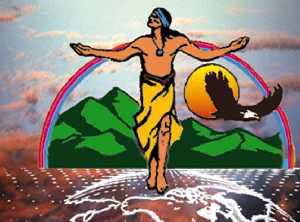
Vision Quest
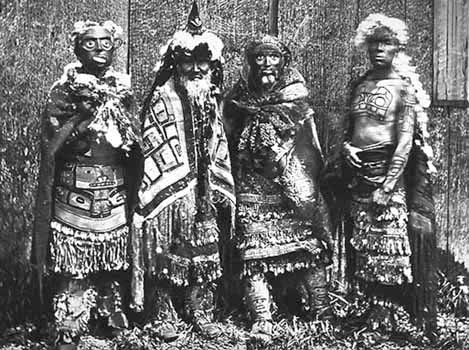
Hallucinogens
Native American History and Myths
